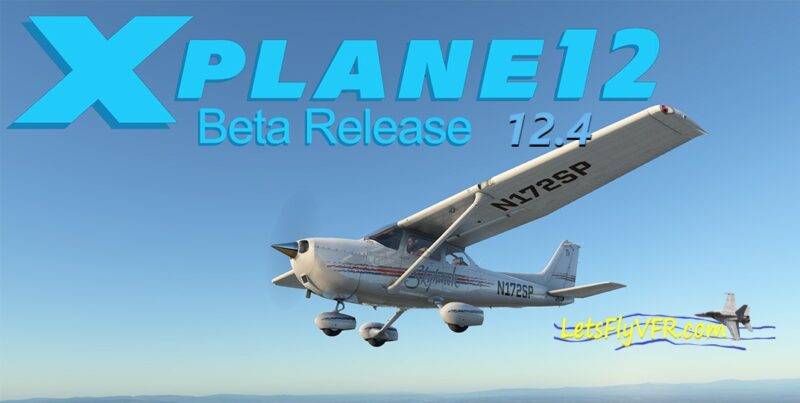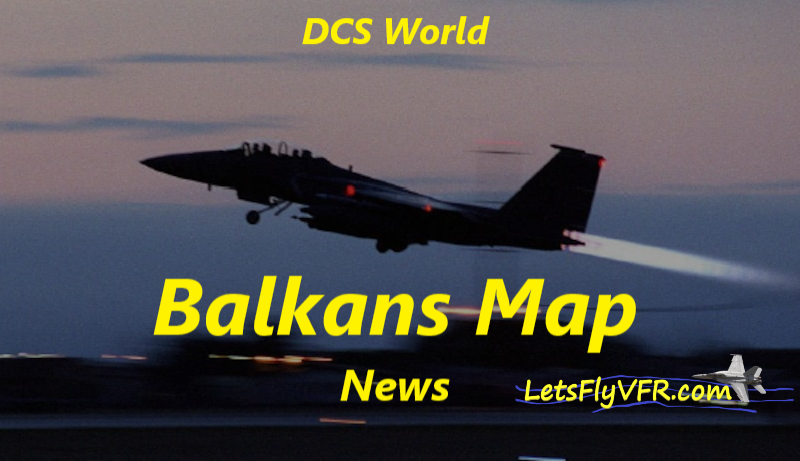Mastering Aerodynamics in Flight Sims: Techniques for Realistic Flight Handling
Introduction
Flight simulators have come a long way in replicating real-world aerodynamics, giving us the tools to experience the feel of flight without leaving the ground. However, mastering realistic flight handling requires a deeper understanding of aerodynamics and some specific adjustments within simulators. This guide will explore essential techniques for realistic handling, focusing on how to tune settings in MSFS 2024, X-Plane 12, DCS World, and Falcon BMS for general aviation enthusiasts.
1. Understanding Basic Aerodynamics in Flight Sims
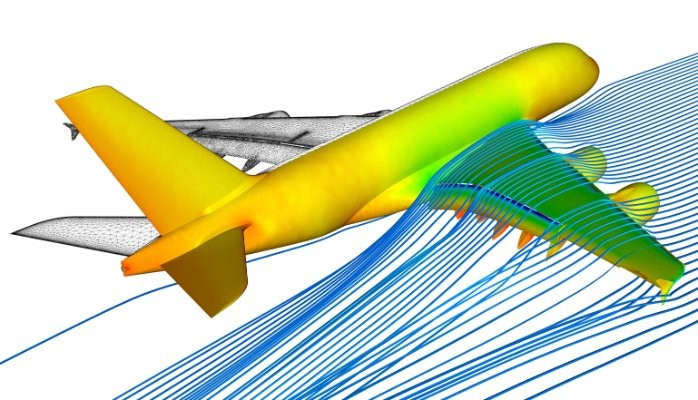
To replicate realistic handling, it’s essential to understand how a real aircraft responds to various aerodynamic forces:
- Lift and Drag: Lift is generated by the wings and opposes gravity, while drag resists the aircraft’s movement through the air. Understanding how these forces interact at different speeds and angles is crucial for sim pilots.
- Angle of Attack (AoA): This is the angle between the oncoming air and the wing. High AoA increases lift but can lead to stalls if too steep.
- Thrust and Weight: These forces directly impact climb and descent rates, particularly in simulators with accurate weight distribution models. Each flight sim model handles these forces differently, so to get the best experience, it’s essential to tailor your settings to simulate the real physics as closely as possible.
2. Choosing Realistic Flight Models
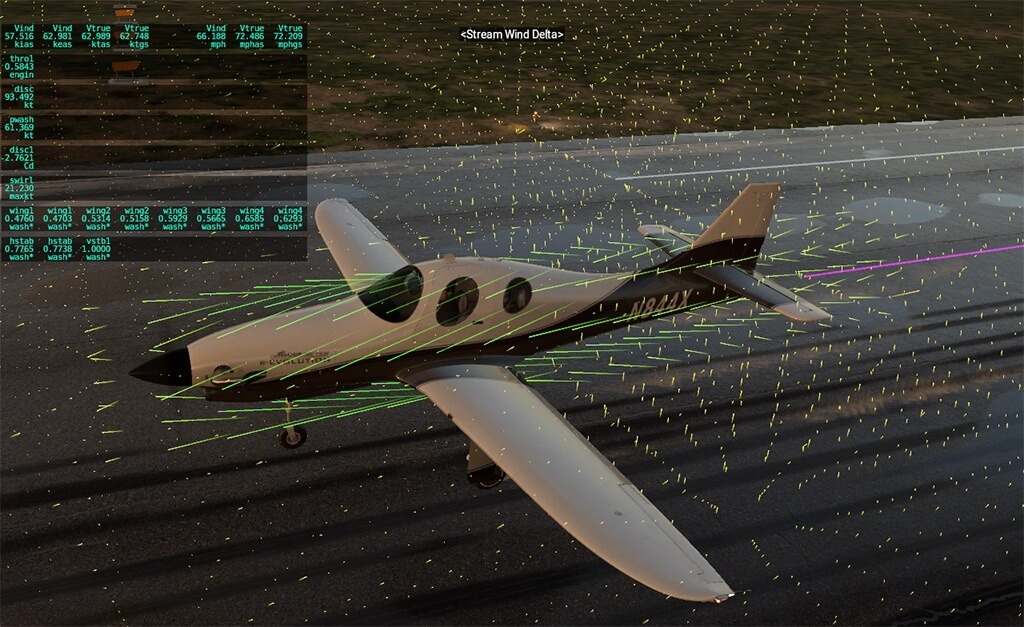
Different simulators have varied approaches to modelling aerodynamics:
- X-Plane 12’s Blade Element Theory: X-Plane uses real-time calculations for aerodynamic properties based on wing shapes, size, and airspeed. This makes it one of the most accurate simulations for handling flight dynamics in smaller aircraft.
- MSFS 2024: Microsoft Flight Simulator uses computational fluid dynamics (CFD) for aerodynamics. Its airflow modelling is especially strong at simulating complex weather effects and handling characteristics for small aircraft.
- DCS World and Falcon BMS: While these simulators are often more focused on combat aircraft, their flight models are still advanced enough to offer realistic handling for general aviation aircraft when properly tuned. Pro Tip: For each simulator, explore settings that enhance the accuracy of aerodynamics. X-Plane 12, for example, has options to increase the frequency of flight model calculations, which can yield a smoother, more realistic experience.
- Latest CPU’s Available Now – Amazon.com
- Get a NEW GPU Best Performance – AMAZON.com
- Upgrade RAM Here today – AMAZON.com
- Prebuilt PC Options – AMAZON.com
3. Optimizing Control Sensitivity and Response
Realistic flight handling starts with control sensitivity. Since real aircraft controls offer a tactile feedback that simulators cannot fully replicate, setting up your controls carefully is essential.
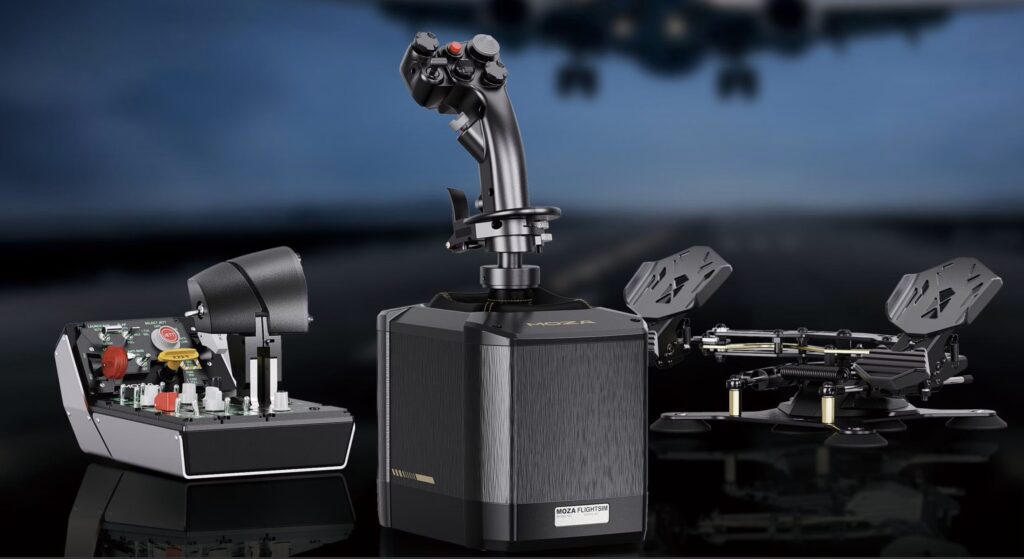
- Joystick and Yoke Sensitivity: Adjust the sensitivity and response curves for pitch, roll, and yaw in the simulator’s settings. For general aviation, aim for smooth, progressive input curves to mimic the gradual control input required in real planes.
- Rudder Pedals: In simulators, rudder pedals can be overly sensitive. Lower the sensitivity to achieve more realistic ground handling and reduce the risk of oversteering during takeoff and landing.
- Trim Settings: Proper trimming is fundamental for stable flight. Ensure your trim controls are easily accessible. In simulators like MSFS and X-Plane, adjusting trim for hands-free flight becomes crucial for handling and comfort. Suggested Settings:
- X-Plane: Set control response to around 25-30% for smoothness, especially with lighter aircraft.
- MSFS: Use sensitivity curves to reduce the initial response but allow for full control input at the extremes. A linear curve may feel too abrupt; consider exponential curves for smoother, more gradual responses.
4. Mastering Aircraft Weight and Balance

One often-overlooked factor in realistic handling is weight and balance. In general aviation, shifting weight distribution impacts centre of gravity (CG), which in turn affects stability.
- Load Configuration: Adjust passenger, fuel, and baggage weights in the simulator’s payload settings. An aircraft that’s slightly tail-heavy will have a different response in pitch than one that’s nose heavy.
- CG Adjustments: Find a CG setting that aligns with real-world aircraft specs. Most simulators will provide CG calculations based on your loadout. Aim to keep it within safe limits for more realistic manoeuvring and stall characteristics. Practical Example: In MSFS, use the weight and balance menu to simulate various scenarios, like flying with a full passenger load versus solo. Adjusting these settings allows you to experience how different weights affect take off, landing, and cruise stability.
5. Fine-Tuning Environmental Conditions

Realistic handling also depends on simulating environmental factors that affect aerodynamics:
- Wind and Turbulence: Both X-Plane 12 and MSFS 2024 offer detailed weather settings. Set realistic crosswinds for take off and landing practice and include turbulence for added challenge.
- Thermals and Updrafts: In X-Plane, thermals can replicate real-world updrafts, which general aviation pilots encounter frequently. Adjusting these adds realism, especially for glider simulations or slow-moving aircraft.
- Real-Weather Settings: MSFS has an excellent live weather system. For true-to-life flights, enable live weather to experience real-time conditions, including temperature, wind shear, and pressure systems. Simulation Tip: Adjust the turbulence factor in X-Plane’s weather menu. Set moderate to high turbulence for light aircraft on warm days, where convective currents play a role in altitude handling.
6. Practicing Advanced Aerodynamic Manoeuvres

For realistic flight handling, practicing specific manoeuvres can help refine your control skills:
- Stalls and Spins: Stalls occur when the angle of attack exceeds a critical limit, and spins are often a result of improper recovery from stalls. Practice stalls at various speeds and weights to understand recovery techniques. In X-Plane and MSFS, performing spins can help develop a feel for control surface limits.
- Crosswind Landings: Crosswinds challenge pilots by requiring a combination of rudder, aileron, and pitch control. Set up crosswind scenarios to practice crab and slip approaches.
- Slow Flight: Slow flight requires precision and control. Practicing this manoeuvre in simulators like MSFS and X-Plane helps pilots develop skills to maintain altitude and airspeed near the stall threshold. Practical Setup: In MSFS, set up training scenarios with varying wind conditions. Test your slow flight and crosswind landing techniques, adjusting to different aircraft weight and weather conditions for realism.
7. Leveraging Plug-Ins and Add-Ons for Enhanced Physics
To enhance realism even further, consider plug-ins that improve flight physics and handling:
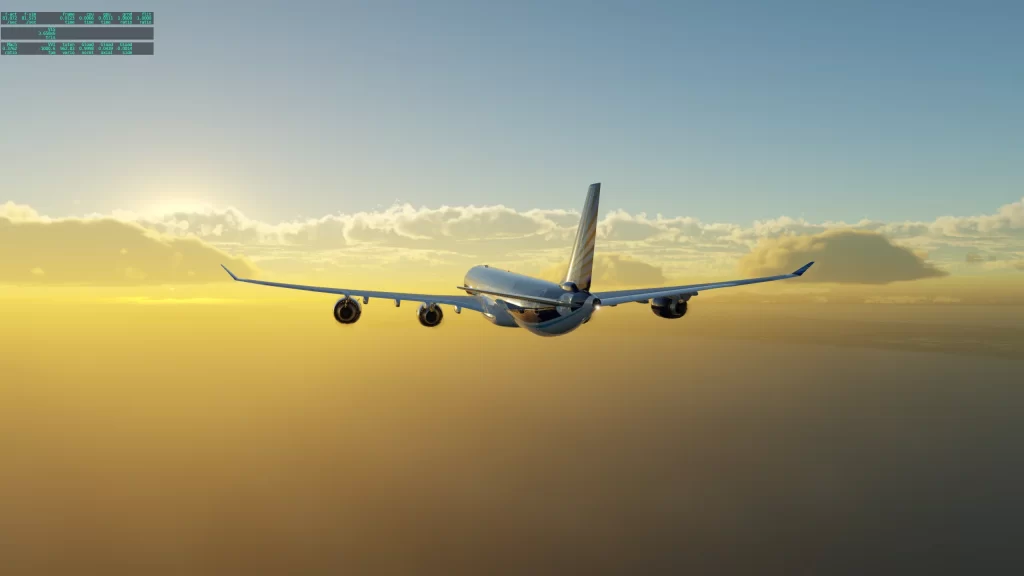
- X-Plane Realistic Physics Add-Ons: Many third-party plugins offer enhanced aerodynamics, including weather effects, control surface accuracy, and ground handling improvements.
- MSFS Marketplace Add-Ons: Certain third-party aircraft bring custom aerodynamics to the base simulator, making them feel more authentic in handling.
- DCS Mods for Flight Dynamics: While primarily a combat simulator, DCS has mods that improve flight dynamics for its civilian aircraft, creating a more lifelike experience. Example Add-Ons:
- Reality Expansion Packs (REP) for X-Plane add realistic physics, maintenance requirements, and dynamic engine modelling for general aviation aircraft.
- A32NX FlyByWire mod for MSFS refines airliner handling and simulates more precise aerodynamic characteristics.
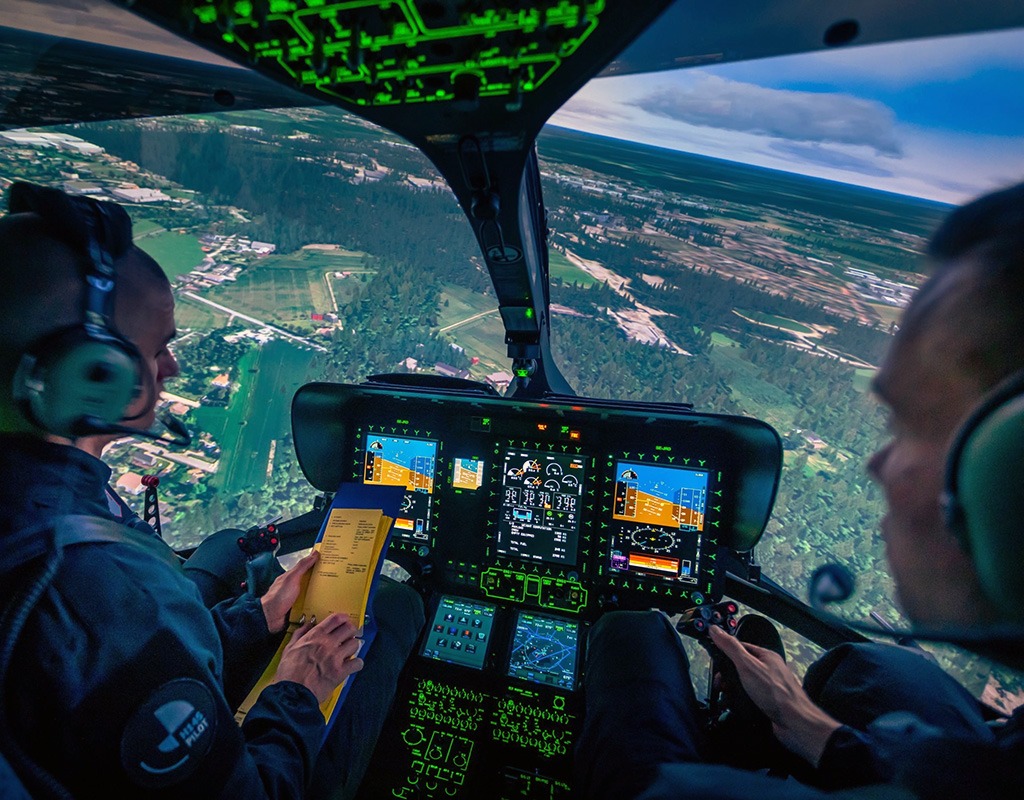
8. Utilizing Realistic Visual Feedback Techniques
Visual feedback is key to interpreting aircraft handling cues that can’t be felt in a simulator. Here are some techniques:
- TrackIR or VR for Head Tracking: Both TrackIR and VR allow sim pilots to look around the cockpit and outside the aircraft, providing better spatial awareness. This is especially helpful during manoeuvres like crosswind landings or steep turns.
- Using Cockpit Instruments Effectively: Realism in simulators requires attentiveness to instruments like the Attitude Indicator and Turn Coordinator. These give visual feedback on bank angle, climb, and descent rates, crucial for controlled manoeuvres. Tip for VR Users: VR simmers benefit from depth perception, making it easier to judge distances and flight paths. Combined with accurate flight dynamics, VR can make slow flight, landings, and manoeuvring feel incredibly realistic.
The Complete Beginner’s Guide to DCS World
Welcome to the world of Digital Combat Simulator (DCS World), the ultimate flight combat simulation that brings the thrill of…
Comparing Real World Aviation Procedures to Flight Sim Techniques.
Flight simulators have grown into sophisticated training tools, bridging the gap between virtual flight and real-world aviation….
Mastering Dogfighting in DCS World and Falcon BMS: Max-Perform Your
This post covers essential techniques, cues, and parameters that new combat pilots need to dominate close-range dogfights in DCS World…
X-Plane 12.4 Beta Review – Exciting Additions!
X-Plane 12.4 Beta Review – A Major Leap Forward for Performance, VR & Visual Fidelity Note: X-Plane 12.4 is currently in…
Full Guide: DCS Balkans Map + All Upcoming DCS World
Full Guide: DCS Balkans Map + All Upcoming DCS World Modules. Summary: Eagle Dynamics and OnReTech have officially announced DCS: Balkans,…
DCS World T-45 Goshawk Formation Flying for Beginners Tutorial .
Military Formation Flying in DCS: Your First Flight in the T-45 Goshawk. So, you’ve got your wings (virtually speaking), strapped into…
DCS WORLD T-45 Goshawk EASY Navigation for Beginners.
DCS WORLD T-45 Goshawk EASY Navigation for Beginners is simply that. We do our planning in the DCS World Editor…
How the U.S. Navy Trains Jet Pilots: A Complete T-45
Welcome to Letsflyvfr.com guide to T-45C Goshawk Training – How the U.S. Navy Trains Jet Pilots so you can train…
DCS WORLD – The MB-339 by IndiaFoxtEcho: A Complete Overview.
The MB-339 occupies a very particular niche in DCS World: it’s not a fighter, not a frontline attack jet, but…
- Joystick / HOTAS – AMAZON.com
- Rudder Pedals – AMAZON.com
- Throttle Quadrant – AMAZON.com
- Gaming Chair – AMAZON.com
- VR Headset – AMAZON.com
Conclusion
Mastering aerodynamics in flight sims takes time and attention to detail, but with the right techniques, settings, and practice, you can achieve a realistic flight handling experience that mirrors real-world aviation. Whether you’re flying a Cessna in MSFS or a Piper in X-Plane, focusing on aerodynamic fundamentals and fine-tuning your setup brings you closer to true-to-life piloting. As technology advances, flight sims continue to offer increasingly sophisticated tools to simulate real-world physics—embrace these tools to elevate your virtual flight experience.

This post should offer a comprehensive guide to achieving realistic handling in flight simulators, helping readers hone their skills and experience flight as close to the real thing as possible.
Author
Brendon McAliece (Aka Gunnie) is a military veteran with 23 years working on Jet Fighters, their weapons systems and ejection seat/module systems as well as munitions and R&D. Involved with flight simulation since the 1980s, he has flown all the major flight simulators over the years.
He is an Australian expat who has lived in Malaysia, UK, Saudi Arabia and more recently Thailand. He is a multi-lingual blogger who loves to share his life experiences here on LetsFlyVFR.com and DreamingGuitar.com, with his lifestyle and Travel experiences Blog plus his Dreaming Coffee website.
Learn More @ DreamingGuitar.com – DreamingCoffee.com – LetsFlyVFR.com
( HOME – BLOG – SHOP – ABOUT )
As an Amazon affiliate I may benefit from qualifying sales.




